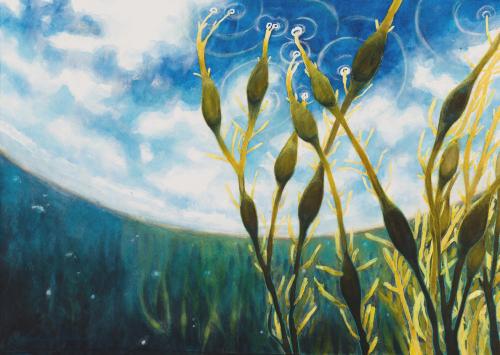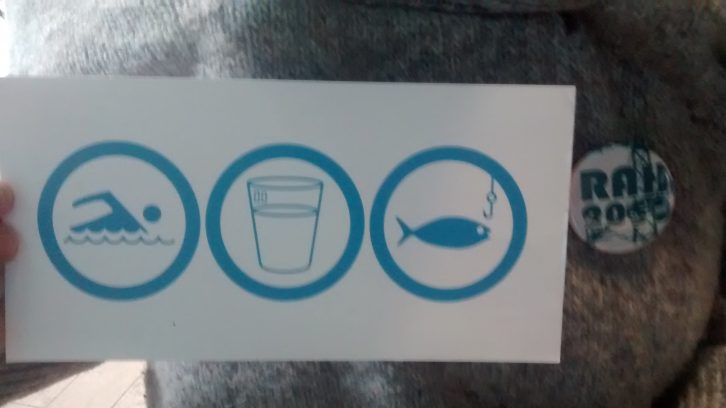Water
Artists, scientists work together on Re-imagining Atlantic Harbours project
Sierra Club project asks: What will the Halifax Harbour look like in 2050?

caption
A man fishes off the boardwalk near Bishop's Landing.
caption
A man fishes off the boardwalk near Bishop’s Landing.When Kelly Schnare’s father was younger, he used to go swimming in Bedford Basin, but when she wanted to do the same it was too polluted.
Today Schnare, an environmental engineer with Sierra Club Canada, is working with scientists and artists to raise awareness about water pollution.
“We need to educate the public about their responsibility,” says Schnare. “Everybody wants to be close to the harbour, but no one knows how to get there.”
Schnare and her colleagues are planning to build an interactive kiosk on the waterfront so passersby can learn about the harbour. It will have five sections: natural history, water access, water quality, plant and animal species, and climate change. It’s expected to be available next spring.
Sierra Club Canada has raised about $3,800 for the RAH project so far through the crowdfunding website Small Change Fund. Its stated goal is about $5,100.
At the same time, Sierra Club Canada is holding an art and music contest that started in October. The theme is “Re-imagining Atlantic Harbours” (RAH) and artists are asked to imagine what the harbour might, or should, look like in the year 2050.
One of the first contestants is Sophie Lavoie, whose paintings are featured on the project website. Lavoie is the daughter of an oceanographer and grew up sailing, diving and snorkeling along Nova Scotia’s coast.

caption
“Terre Mer” a watercolour and pastel painting.One of Lavoie’s pieces is “Terre Mer” (“Earth Ocean”, a play on “Earth Mother”), a watercolour and pastel painting inspired by a snorkeling trip to Duncan’s Cove.
Lavoie took care to paint the seaweed accurately because, she says, it’s as vital to the ocean’s ecosystem as trees are on land. To her, the painting shows the interdependence of all living things.
Regarding the Sierra Club’s goal of cleaning up the harbour, Lavoie says it’s a good idea.
“I think, not that it’s overdue, but that it’s very, very timely,” she says.
She says that because the powerful tides near Halifax Harbour sweep away a lot of the pollution, it looks cleaner than it really is and the city is less concerned than it should be.
“The harbour was always more of a functioning thing for the industry and less about people’s enjoyment,” says Lavoie.
At one point, raw sewage was flushed untreated into the harbour.
Three new sewage treatment plants were built between 2004 and 2010. Water quality improved by 85 per cent in some areas and up to 97 per cent in others, according to a 2011 report prepared for the municipality. The Dingle and Black Rock beaches have been open for swimming since 2008.
“There is no indication that the current levels (of suspended solid matter in the harbour) are abnormal or that they can be reduced further,” says the report.
For Schnare and her team, there is still room for improvement. They want to change not only the harbour, but how people think about it.

caption
The RAH project’s logo: “Swimmable, drinkable, fishable.”Schnare says she wants to teach “social licensing” or the idea that every citizen, not just the government, is responsible for keeping Halifax clean.

